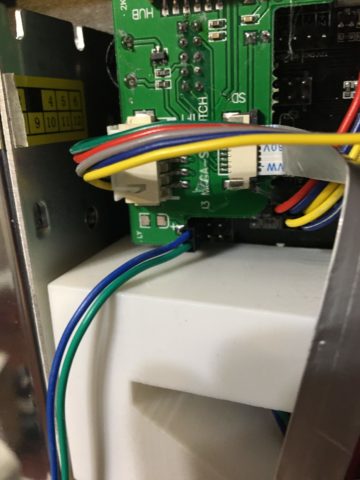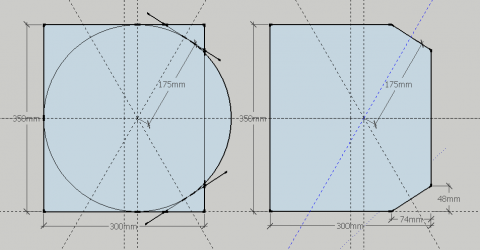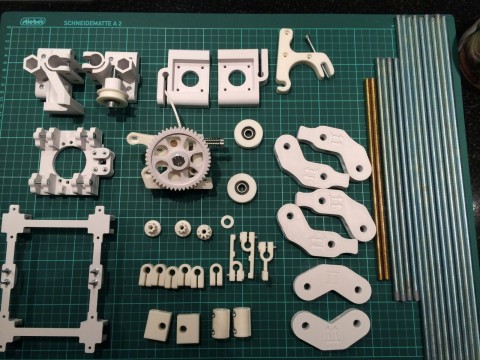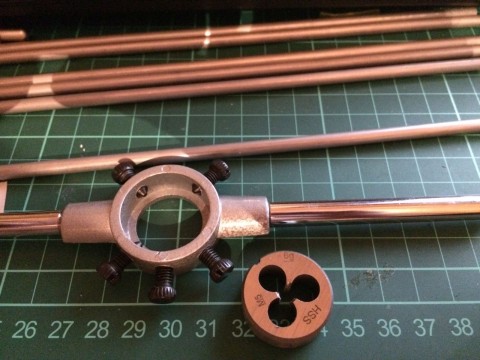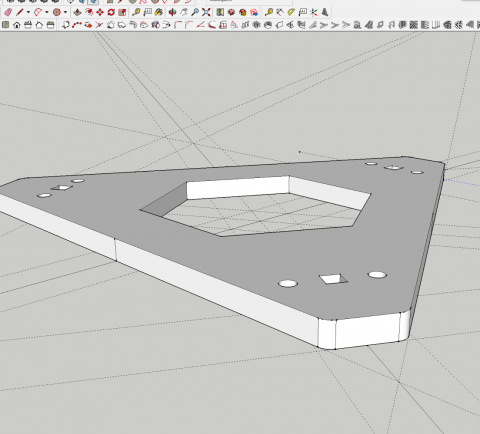Diesen Schritt sollte man an jedem i3 Mega durchführen
3D Drucker
Ramps 1.4 Heatbed MOSFEST Austausch
Die Heatbed Heizung schaltete sich andauernd ab. Nach einer genaueren Überprüfung zeigte sich, daß der Q3 MOSFET am D8 Ausgang überhitzte.
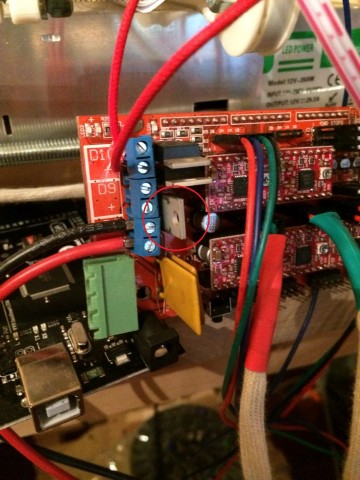
3D Drucker – Delta Bauform – Bau
RepRap Mendel Prusa i2
Aufbau eines Mendel i2
Als Alternative zum Delta Drucker setze ich einen Mendel Prusa i2 zusammen.
Vorteil hier, die ganze Mechanik kostet in etwas soviel wie gehärtete Führungen für den Delta Drucker.
Alle anderen Teile (Stepper, Steuerung, Hotend) können weiterhin verwendet werden.
Effektor Stangen
Zusammenbau des Effektors
Ursprünglich waren Carbonstangen geplant. In diese lassen sich jedoch nur schwer Gewinde reinschneiden. Aluminium ist zwar etwas schwerer aber er läßt sich einfach besser verarbeiten.
Materialliste:
- Alu Rundstab 5mm 25cm – ebay
- Winkelgelenk M5 – link
- Gewindeeinsätze M5 – link
- Scheindeisen und Scheidöl
Stange in den Akkuschrauber eingespannt und auf langsame Stufe rein gedreht.
Anschließend auf gleicher Länge fixieren mit Schraubensicherungslack.
3D Ducker – Delta Bauform – Planung
Hier entsteht langsam ein 3D Drucker nach dem Kossel / Rostock Modell.
Statt einer Kartesischen wird eine trigonometrische Steuerung benutzt.
Inspiration holte ich mir hier
Einzelteile
- Edelstahlrohr – 12mm
- GT2 Zahnrad – Zahnrad und Band
- Stepper Motor Nema17 17HS4417 –
- Hotend MK-V – E3D oder MK – V
- Linearkugellager – LM12UU
- Winkelgelenk – M5 DIN71802
- PLA vs ABS
- Carbonstange – 5 mm
- Netzteil – Laptop Netzteil 12V 8 A
Erster Entwurf
